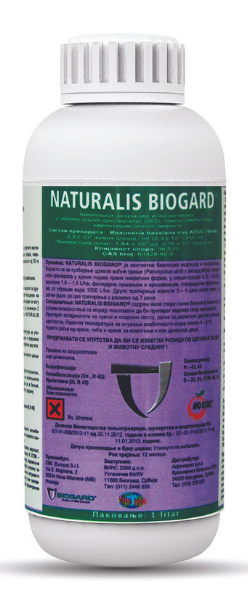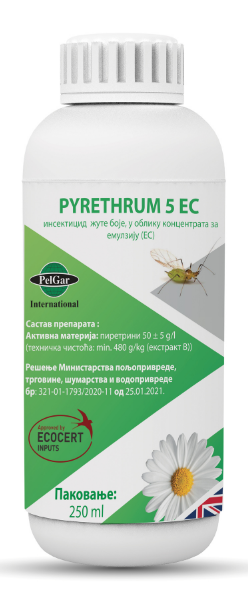With expansion of organic production and environmental care in the last few decades a special group of biopesticides developed. Biopesticides are types of pesticides obtained from natural materials such as microorganisms (fungi, bacteria, viruses,..), plants (plant extracts) and animal world (nematodes) as well as some minerals.
Basic characteristics of biopesticides are that they are less toxic, or not toxic to people, active against the targeted harmful organisms and effective in smaller quantities. This way they are fast-degradable and have no residual action. No resistance of the targeted harmful organisms towards biopesticides has been noticed so far.
Biopesticides are not perfect, they need more time to become effective (slower speed of action) and have weaker persistency (shorter effectiveness). Their development and improvement are recognized as priority in order for them to become potential replacement to conventional pesticides.

Class: Biopesticide
Active ingredient: Cydia pomonella Granulosis Virus (CpGV) 1013 virus particles /l; isolate: Mexican isolate (CpGV –
Formulation: SC – Suspension concentrate
Package: 1 l
Producer: Arysta Life Science

Class: Bioinsecticide
Active ingredient: See-through crystal protein
Formulation: WG – wettable powder
Package: 1kg
Producer: Biogard

Class: Bioinsecticide and acaricide with contact action
Active ingredient: live spores of ATCC 74040 of entomopathogenic fungi Beauveria bassiana, not less than 2.3 x 107 spores/ml in 100g of the product
Formulation: SC – suspension concentrate of spores in oil
Package: 1l
Producer: Biogard

Class: Contact insecticide
Active ingredient: Azadiiraktin (mixture azadiraktin A + azadiraktin B) 0,03%M)
Formulation: EC –emulsion concentrate
Package: 1l

Class: Contact insecticide
Active ingredient: Pyrethrin
Formulation: EC –emulsion concentrate
Package: 250 ml, 1 l
Producer: PelGar International

Class: Biopesticide
Active ingredient: Non-organic fertilizer
Formulation: liquid
Package: 500 ml, 1 l
Producer: LIDA PLANT RESEARCH